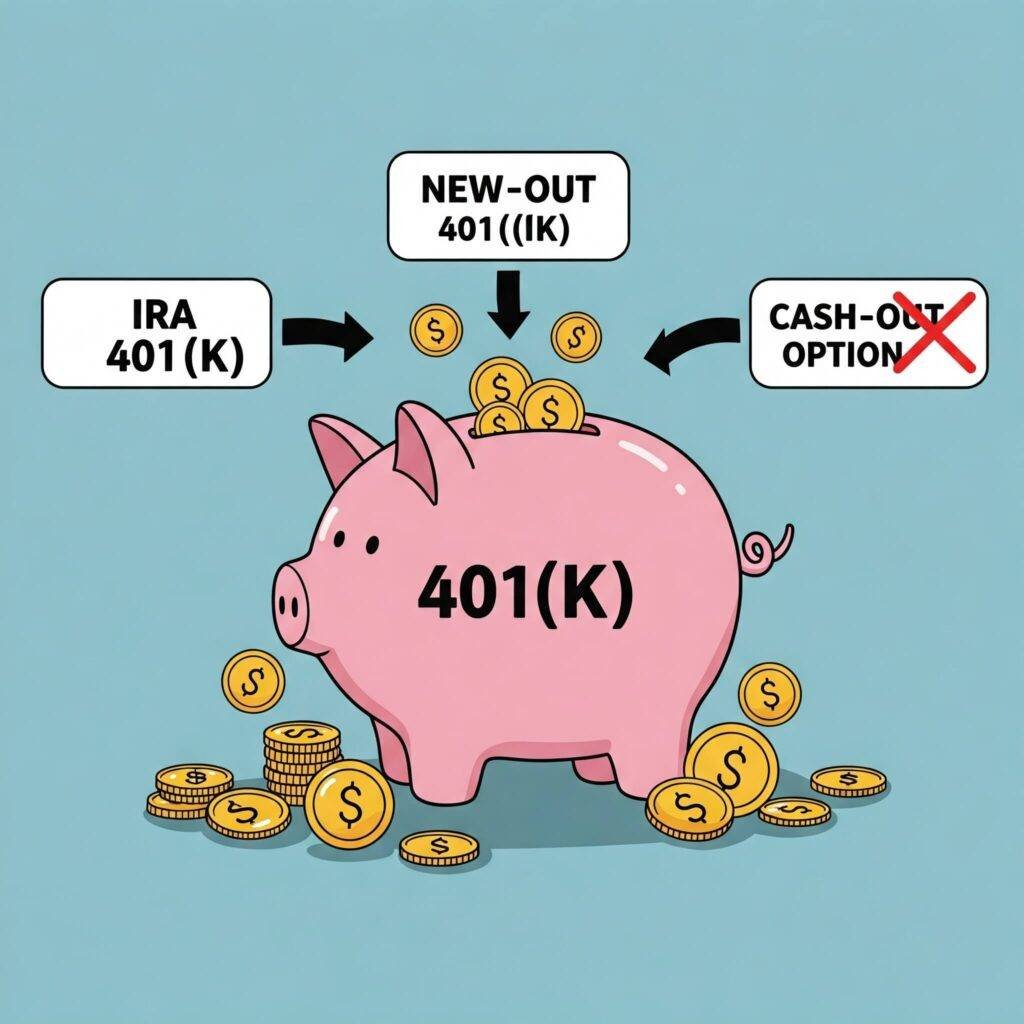Making a 401(k) rollover decision can feel like standing at a financial crossroads. Should you move your hard-earned retirement savings to a new plan, cash out, or leave it where it is? The choice you make could impact your financial future for decades. This guide breaks down everything you need to know before deciding, with actionable insights to help you avoid costly mistakes and optimize your retirement strategy.
Why Your 401(k) Rollover Decision Matters
Your 401(k) is a cornerstone of your retirement plan, and deciding what to do with it when you change jobs or retire is critical. A 401(k) rollover decision involves transferring your retirement savings from an employer-sponsored 401(k) to another account, such as an Individual Retirement Account (IRA) or a new employer’s plan. According to the U.S. Bureau of Labor Statistics, the average American changes jobs 12 times in their career, making 401(k) rollovers a common financial move.
A poor decision—like cashing out early—can lead to hefty taxes and penalties, while a smart rollover can preserve your savings and enhance growth. Let’s explore your options and the factors to consider.

Understanding Your 401(k) Rollover Options
Before making a 401(k) rollover decision, you need to know your options. Each choice has pros and cons, depending on your financial goals and circumstances.
1. Roll Over to an IRA
Transferring your 401(k) to an IRA is a popular choice. IRAs often offer:
- More investment options: Choose from a wider range of stocks, bonds, and mutual funds.
- Lower fees: IRAs typically have lower administrative costs than 401(k) plans.
- Flexibility: Manage your investments independently or with a financial advisor.
Example: Sarah, a 35-year-old marketing manager, rolled her 401(k) into an IRA when she switched jobs. She gained access to low-cost index funds and saved $200 annually in fees.
2. Transfer to a New Employer’s 401(k)
If your new employer offers a 401(k), you can transfer your old plan into it. Benefits include:
- Consolidation: Keep all your retirement savings in one place.
- Continued tax-deferred growth: No tax penalties for direct transfers.
- Employer match potential: Some plans offer matching contributions.
Note: Check the new plan’s fees and investment options, as they may not be as competitive as an IRA.
3. Leave It in the Old 401(k)
You can leave your money in your former employer’s 401(k) if the balance is over $5,000. This is a low-effort option but may come with:
- Limited control: You can’t contribute to or actively manage the account.
- Higher fees: Some 401(k) plans charge high administrative costs.
4. Cash Out (Not Recommended)
Cashing out your 401(k) is tempting but risky. You’ll face:
- A 10% early withdrawal penalty if you’re under 59½.
- Income taxes on the full amount.
- Loss of future growth potential.
Data Point: According to Vanguard, a $50,000 401(k) cashed out at age 35 could cost you over $250,000 in lost growth by age 65, assuming a 7% annual return.

Key Factors to Consider in Your 401(k) Rollover Decision
To make an informed 401(k) rollover decision, weigh these critical factors:
Tax Implications
A direct rollover (from 401(k) to IRA or another 401(k)) is tax-free if done correctly. However:
- Indirect rollovers: If you receive a check, you have 60 days to deposit it into a new account, or you’ll owe taxes and penalties.
- Roth conversions: Rolling a traditional 401(k) into a Roth IRA triggers taxes on the converted amount.
Tip: Always request a direct trustee-to-trustee transfer to avoid tax headaches.
Fees and Costs
Compare fees between your current 401(k), a new employer’s plan, and an IRA. Look at:
- Expense ratios for mutual funds or ETFs.
- Administrative fees charged by the plan provider.
- Advisor fees if you work with a professional.
Example: John discovered his old 401(k) charged a 1.5% annual fee, while an IRA with a robo-advisor cost just 0.25%. Rolling over saved him $1,250 yearly on a $100,000 balance.
Investment Options
IRAs typically offer more investment flexibility than 401(k) plans. If you want to diversify into real estate, ESG funds, or individual stocks, an IRA may be ideal.
Your Financial Goals
Consider your retirement timeline and risk tolerance. For instance:
- Younger workers may prioritize growth and opt for an IRA with aggressive investments.
- Those nearing retirement might prefer a 401(k) with stable, low-risk options.
Outbound Link: Learn more about IRA vs. 401(k) differences at Investopedia
Steps to Make a Smart 401(k) Rollover Decision
Ready to act? Follow these steps to ensure a smooth 401(k) rollover decision:
- Review Your Current 401(k): Check your balance, fees, and investment performance. Request a summary plan description from your employer.
- Compare Options: Research IRAs and new employer plans. Use tools like Morningstar to analyze fees and funds.
- Consult a Financial Advisor: A professional can help tailor your decision to your goals. Look for a fiduciary advisor who prioritizes your interests.
- Execute the Rollover: Contact your 401(k) provider and the new account provider to initiate a direct transfer. Double-check paperwork to avoid errors.
- Monitor Your Investments: After the rollover, regularly review your portfolio to ensure it aligns with your retirement strategy.

Common Mistakes to Avoid in Your 401(k) Rollover Decision
Even a small misstep can derail your 401(k) rollover decision. Watch out for these pitfalls:
- Missing the 60-day window for indirect rollovers, triggering taxes and penalties.
- Ignoring fees: High costs can erode your savings over time.
- Cashing out impulsively: The short-term gain isn’t worth the long-term loss.
- Not researching the new plan: Ensure the new account aligns with your goals.
Pro Tip: Use a rollover calculator, like the one from Bankrate, to estimate the impact of your decision.
Final Thoughts: Make Your 401(k) Rollover Decision with Confidence
Your 401(k) rollover decision is a pivotal moment in your retirement journey. By understanding your options, weighing key factors, and avoiding common mistakes, you can protect your savings and set yourself up for a secure future. Whether you choose an IRA, a new 401(k), or leave your funds in place, act thoughtfully and seek professional guidance if needed.
Take control of your retirement today—your future self will thank you.
Outbound Link:

